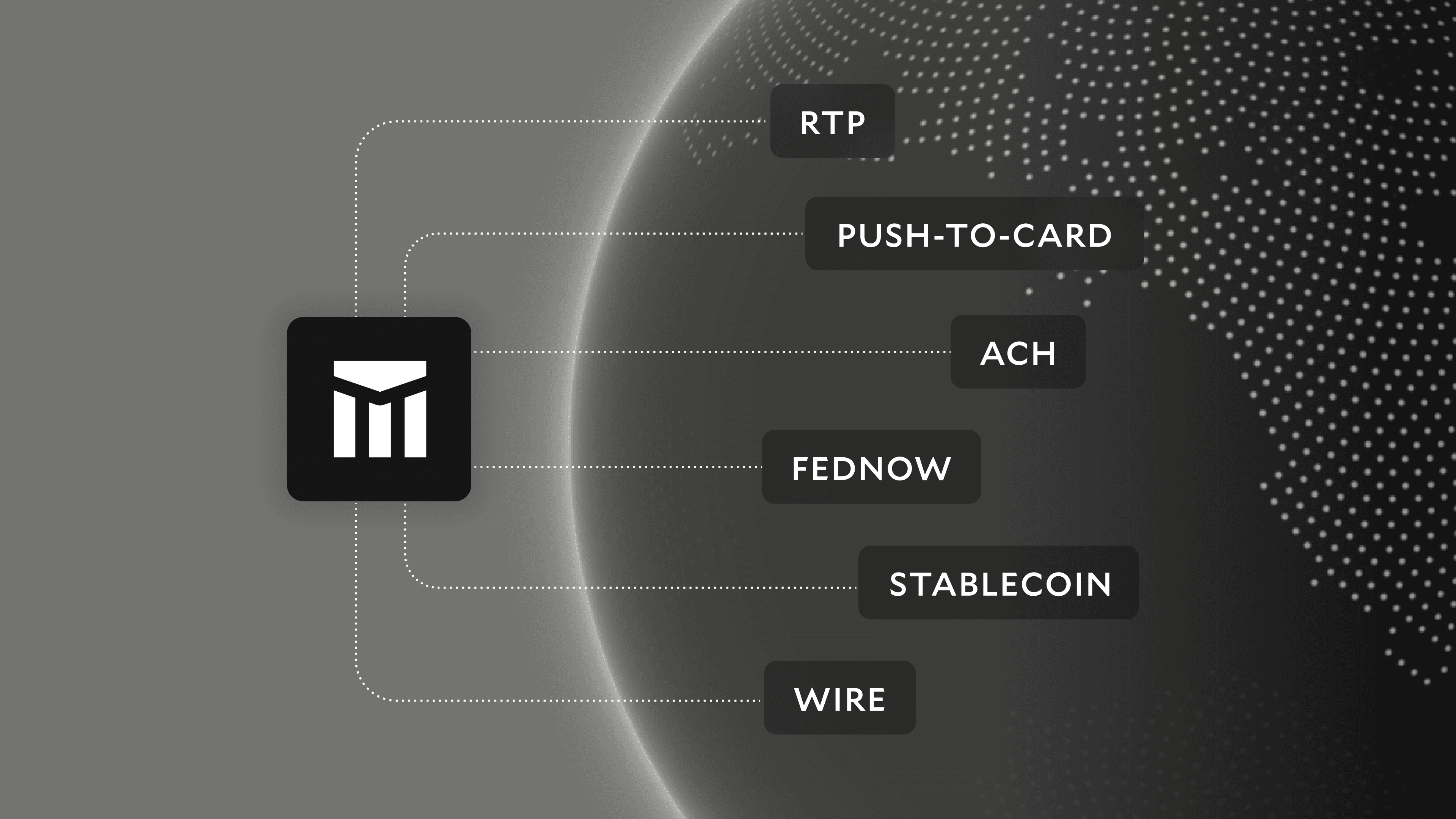Modern Treasury and Paxos Make It Easier for Businesses to Move Money with Stablecoins.Learn more →
Why Digital Finance Transformation is Key to Visibility, Growth, and Success
Colin Anderson, Palantir’s former CFO, argues now is the time to modernize payment operations.

The benefits of digital transformation have been clear for years: efficiency, organizational agility and transparency, which, in turn, can foster trust, customer satisfaction and growth. And yet, when it comes to the embrace of modern, cloud-based platforms, finance departments have tended to be laggards, not leaders. That’s changing, as more and more CFOs are realizing the benefits of modernizing their companies’ payments.
Colin Anderson, the founding partner of Friends & Family Capital and former CFO of Palantir Technologies, recently spoke with Modern Treasury about why CFOs should be champions of digital finance transformation, even in today’s tumultuous economy. Disruption, he says, is happening one way or another. The question is: will you disrupt, or be disrupted?
What’s the biggest challenge facing CFOs today?
First and foremost, a key priority and constant challenge for CFOs is creating legibility into and understanding of what's actually happening in their businesses. One of the beautiful things about finance is that no matter what the atomic units of your business, at some point there will be a translation into a number or metric, typically as a transaction, collection or payment. At a basic level, customers should only pay you if you create value for them. The way your business shares in that value creation is by collecting cash from your customers. The way you know where your business is investing is by looking at your bills.
Connecting all those dots is literally one of the main challenges, and ties into payment operations. Do you have legibility into everything that’s happening in real time?
It's one thing to look at an audit after the fact, or to close the books quarterly or even monthly. It's another thing to know what’s happening in real time.
Do I have the cash where it needs to be to meet my obligations? Am I supporting all of my customers in the way they need to be supported? Am I getting paid by the people who need to pay me? Do business operators have confidence that their teams are investing in the right areas? From the seat of the CFO, a first order approximation that can answer these questions really comes through having the legibility to follow the money.
How does legibility relate to managing for growth and scale?
I tend to follow simple models because you can remember them as complexity grows. One simple model we used inside Palantir through periods of rapid growth was that of an accelerating train. Here your company is the train, and it’s traveling faster and faster. Your job as a CFO is not just to make sure it’s in motion, but also to look ahead and ask yourself some important safety questions. How far down the track can you see? Is there an obstruction? If so, what are your options? Do you have the levers to slow the train down or to switch to a different track? Do you need to build a bridge? Will you need to do something crazy like turn the train into a plane to fly over an obstruction or chasm? Using these first principles questions can help you stay above all the noise that you’re constantly bombarded with when you’re a CFO.
So as you scale, keep answering those fundamental questions: Do I have money? Is it safe? How do I know it’s safe? What’s it invested in? On the payment operations side, is my money sitting with me until it goes out? Or is it sitting with a third party until it goes out? Do you have faith in that third party? If you’re getting payment data as the lifeblood of legibility of your business, how far in advance can you see with it? Do you have a week of forecasting and parameterization? A month? A year?
It’s about constantly extending your thinking, or—in the train metaphor—extending your visibility. And then considering how to react and respond.
How can technology enable digital finance transformation?
Technology is a force multiplier to humans, especially at scale. Software can handle data very, very quickly and accurately. So let a computer do that. And let humans do what they’re best at in the world, which is looking at the broader context and trends, and examining whether things make sense. Answering fundamental “why” questions is not a strength of computers today. That’s for humans.
Think about embedded payments, for example. They can unlock members of a finance, accounting or product team from having to do rote processes where computers may be best. And that, in turn, empowers those teams to think about the bigger picture. It’s up to humans to figure out processes and ask questions: Are my workflows connected in the right way? Why are we doing this? For what purposes and under what conditions? That’s what humans should focus on: the higher order piece. And when it comes to payment matching ledgers, let technology, embedded payments, solve it.
With this technology, you can run faster, you can do things more safely, with fewer errors, and your team is going to be happier. You’ll have fewer fire drills when something goes wrong. You can focus on the “why.”
Have distributed workforces made things harder for finance teams?
I find it helpful to view distributed finance workforces within the broader context of digitization. Once upon a time, you were all in the same room and everything was analog. Then your invoices moved to digital but you were all still in the same room. You could walk up to someone and ask, “Hey, how (or why) did we do this?” The friction cost to ask questions was low. Now, you have to call, Zoom or Slack. That form of communication can scale well in a remote world if you’re all speaking the same business language and coming from the same common operating picture of your data and business metrics. But what if you’re not?
The opportunity with payment operations is that it removes much of the friction embedded in answering those types of questions and solves many things based on forecasts, including legibility and other errors.
Cross-border payments come with their own sets of challenges. How can CFOs tackle these?
With the spread of globalization, it’s easy to think everything is the same everywhere. But different countries have different rules for important reasons. As you’re moving anything cross-border, you have to make sure you’re following the rules in all jurisdictions and according to your own internal controls.
I would say digitizing, moving to something like Modern Treasury, really helps with that. You can solve all those problems through an API call and at an abstraction layer where you can say, “Do the right thing subject to the following rules.” That lets you run faster and focus on your core business. Anytime you can create an abstraction layer and know it’s going to be handled correctly, it will unlock human potential and value, and let you accelerate.
We are in a volatile, uncertain economy. Some people may say it’s not the right time to tackle a big project like updating legacy systems and modernizing payment operations. Others may say it’s the perfect time for it. Where do you fall?
Disruption is coming. The question is, do you want to do it yourself before it’s a problem? Or do you want to wait until it becomes a problem? My general bias is to transform yourself before you are disrupted, subject to prioritization and triage.
As CFO you face many competing demands. Maybe the answer doesn’t have to be an all or nothing. Rather than ripping out the technology you’ve been relying on for decades, you can draw a line in the sand and say, “Let’s be smart about how we do this going forward.” And then start to grow your business with these new modern architectures. The legacy stuff will still be there. But you’re positioning yourself for the future. Start small, but start. Realize you’re going to make some mistakes. Just keep going, and invest where you see momentum and strength.






